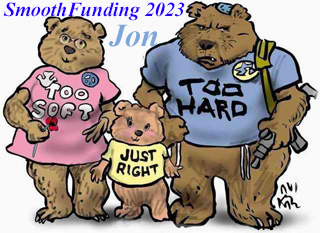|
For over 40 years, I have been worrying about what I see as the undue prominence of very short-term assets returns for very long-term entities. My first article was published in 1983 and that website was launched in April 2000 (most recently updated in January 2024).
The central idea is that “long-term smoothed returns”, which I call DVRs, track ultimate market returns better than short-term market returns. That is what the figures indicate pretty strongly but there are exceptions. In line with how most UK actuaries used to perform funding calculations for “final salary” pension schemes, I have always assumed that similar results would be obtained for the pension scheme as a whole but I never knew for certain.
Until late 2007, I had been concentrating upon assets alone. Although I had always wanted to look at liabilities, I just didn't know how to do it and then I had what I thought was a brainwave. Suppose one took a population of pensioners such that the amounts being paid were in proportion to survival probabilities. Then, tracking the assets and liabilities would be relatively simple. In fact, I eventually built-in a number of variations and producing the visual results was harder than doing the sums. Since then, I have removed the proportionate amounts restriction and I have added the option of having either current beneficiaries or deferred beneficiaries or both.
As I am specifically interested in the financials, the demographic assumptions (especially mortality) are simple, simplistic even, but good enough for the purpose.
|



